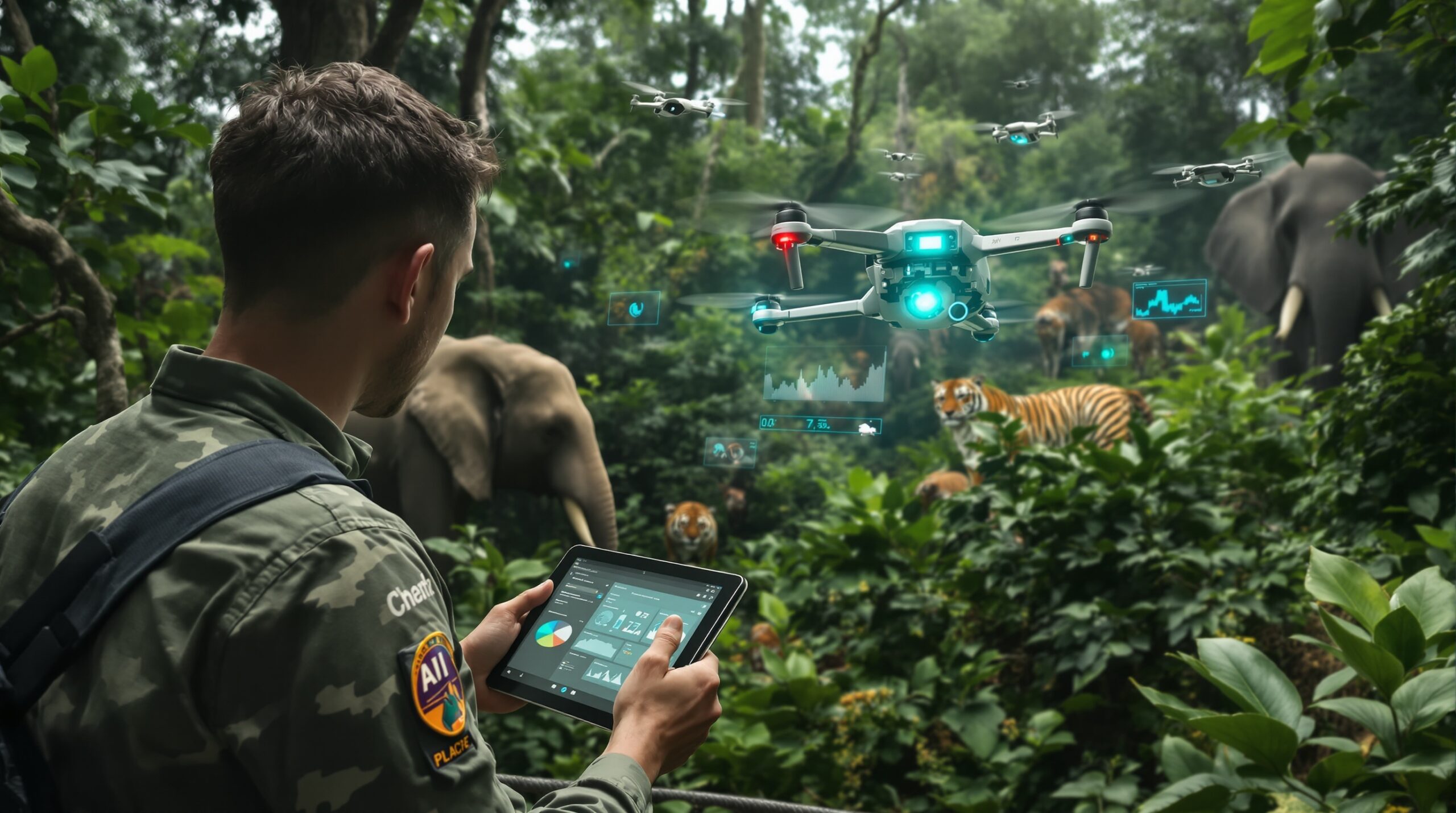Artificial intelligence (AI) has sparked a new era in wildlife conservation. Researchers, non-profits, and governments employ sophisticated AI tools to protect ecosystems. These groundbreaking technologies enable faster data analysis, improved species monitoring, and proactive conservation strategies. The rising capabilities of AI promise measurable progress in preserving global biodiversity. Modern wildlife conservation increasingly depends on machine learning, computer vision, and autonomous sensing.
Enhanced Species Monitoring Through Computer Vision
Wildlife researchers previously relied on manual image classification from camera traps, a time-consuming method prone to errors. AI-powered computer vision systems now automate this process. Advanced algorithms can swiftly identify animals in photos or videos with remarkable accuracy. This shift dramatically reduces human labor and boosts surveillance capabilities. Computer vision models, trained on vast datasets, recognize hundreds of species even in challenging habitats.
Projects like Microsoft’s AI for Earth and Google’s Wildlife Insights demonstrate these advancements. These platforms leverage deep learning to process millions of images worldwide. Conservationists gain timely data, enabling faster responses to threats like poaching or habitat degradation. As computer vision continues to improve, species monitoring becomes more reliable, scalable, and effective. The impact stretches from local parks to remote rainforests.
Acoustic Monitoring Powered by Machine Learning
Many species communicate using sounds often unnoticed by human observers. Machine learning algorithms can analyze thousands of hours of audio recordings from monitoring devices. These AI systems detect species-specific calls, catalog bird songs, and identify the presence of elusive animals. Conservationists can track changes in biodiversity, especially in dense forests or underwater environments.
Programs such as Arbimon and Rainforest Connection use acoustic data to monitor birds, insects, and marine mammals. These technologies help pinpoint endangered populations and understand ecosystem health. The continuous data stream makes it possible to detect disturbances early. AI-driven acoustic monitoring creates a powerful layer of evidence for guiding conservation efforts. Species that were once nearly invisible now leave discernible traces for AI to discover.
Combatting Poaching with AI Surveillance and Predictive Analytics
Illegal poaching threatens many endangered species, such as elephants and rhinos. AI-enabled surveillance systems offer dynamic defense solutions. Camera traps and aerial drones equipped with AI can recognize suspicious activities in real-time. Authorities receive alerts, allowing rapid deployment of anti-poaching teams. This technology minimizes response times and maximizes protective measures.
Predictive analytics enhances these surveillance strategies. By analyzing historical data and environmental patterns, AI predicts likely locations and times for poaching attempts. Solutions like Protection Assistant for Wildlife Security (PAWS) help rangers optimize patrol routes. These systems increase efficiency, reduce costs, and improve the safety of animals and staff. The fusion of surveillance and analytics forms a critical backbone for anti-poaching initiatives.
Drone-Based Ecosystem Mapping
Drones equipped with AI-driven sensors revolutionize how researchers map and monitor ecosystems. Low-cost aerial vehicles can cover vast, difficult terrain in hours. High-resolution cameras and LiDAR sensors collect detailed information on vegetation, animal populations, and landscape changes. AI algorithms analyze these images to detect patterns, estimate biomass, or observe habitat fragmentation.
This approach provides near real-time insights unattainable by conventional fieldwork alone. For example, conservation groups use drones to track orangutan nests in Borneo or count whales in the ocean. The continual stream of data supports better resource allocation, faster conservation action, and ongoing project evaluation. With improving hardware and algorithms, drone-based monitoring sets new standards for efficiency and scalability.
Habitat Restoration and Rewilding Strategies Informed by AI
Restoring habitats and orchestrating species reintroductions require careful planning. AI models analyze satellite images and historical records to prioritize restoration sites. Machine learning helps identify factors driving habitat loss and suggests interventions with the greatest long-term benefits. Conservationists predict which areas will support thriving populations under varying climate conditions.
AI simulations also model potential rewilding outcomes. By testing scenarios virtually, conservationists minimize risk and maximize impact. These data-driven strategies direct resources toward projects with the highest success rates. Habitat restoration guided by AI delivers more sustainable, targeted, and measurable outcomes. As climate change accelerates, these methods become increasingly vital to global biodiversity.
Community Engagement and Citizen Science Integration
AI platforms expand the role of local communities in conservation programs. Citizen scientists collect data using smartphones, drones, or remote sensors. AI then processes these submissions, ensuring accuracy and relevance. This collaboration generates massive, geographically diverse datasets otherwise impossible for single organizations to gather.
Apps such as iNaturalist utilize machine learning to suggest identifications for user-submitted wildlife photos. This empowers people to contribute valuable observations. The growing synergy between AI and citizen science accelerates species discovery, range mapping, and threat detection. Communities gain a sense of ownership, further motivating sustained conservation efforts. Broadened participation makes ecosystem management more inclusive and data-rich.
Challenges and Ethical Considerations
The adoption of AI in wildlife conservation is not without challenges. Data privacy, funding limitations, and technical literacy raise concerns. Remote sensors and AI models might inadvertently aid poachers if security is compromised. There are also risks of algorithmic bias if training data lacks diversity, leading to blind spots in wildlife detection. Ethical frameworks must guide the use of surveillance technologies to respect local communities and protect sensitive locations.
Yet, collaboration among technologists, ecologists, policymakers, and Indigenous groups mitigates many risks. Transparent processes, open data standards, and continuous oversight remain critical. Addressing these challenges ensures AI innovation serves both wildlife and people justly, balancing progress with responsibility.
The Road Ahead: A Digital Conservation Frontier
AI-driven methods have irreversibly transformed wildlife conservation strategies. Innovations speed up detection, increase data reliability, and boost the scalability of interventions. As algorithms become more refined and technologies more accessible, conservationists gain powerful tools for safeguarding our planet’s rich biodiversity.
The future holds ongoing advancements in AI-powered conservation science. Cross-disciplinary partnerships pave the way for smarter, more adaptive approaches. Through committed research, ethical frameworks, and community engagement, AI fortifies humanity’s ability to restore, protect, and celebrate the natural world.


